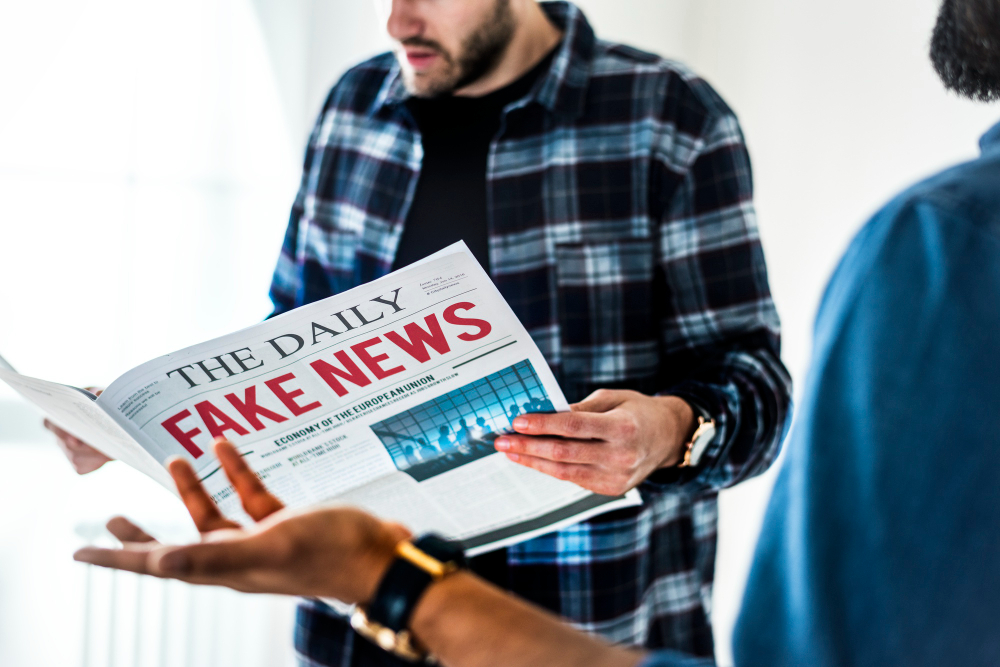Fake News and Misinformation: How to Identify and Combat False Information
In today’s digital age, information travels faster than ever. While this has many advantages, it has also led to the rapid spread of fake news and misinformation. Whether through social media, news websites, or messaging apps, false information can spread like wildfire, influencing opinions, decisions, and even elections. It's crucial to know how to identify and combat false information to ensure you're consuming news responsibly and protecting yourself from misleading content.

Understanding Fake News and Misinformation
Fake news refers to deliberately fabricated stories meant to mislead or deceive readers, often to serve a political or financial agenda. Misinformation, on the other hand, involves spreading false information, but not necessarily with malicious intent. While fake news aims to manipulate, misinformation can result from misunderstandings or unintentional errors.
Both can be harmful, as they can shape public opinions, influence elections, and even affect public health (for example, spreading false health advice). Being able to distinguish between fact and fiction is essential for making informed decisions.
-
Why It’s Important: Understanding what fake news and misinformation are helps you identify the risks they pose in your daily life and online interactions.
Red Flags to Spot Fake News
There are several signs to look out for when trying to determine if news is fake or misleading:
-
Emotional Language: Fake news stories often use exaggerated or emotionally charged language to elicit strong reactions. Headlines that are designed to provoke outrage, fear, or excitement are a red flag.
-
Unreliable Sources: Check the credibility of the source. Legitimate news outlets typically have editorial standards and fact-checking procedures in place. If a story comes from an unknown or untrustworthy website, it’s worth investigating further.
-
Clickbait Headlines: If the headline seems too sensational, overly dramatic, or “too good to be true,” be cautious. Fake news articles often use clickbait headlines to get readers to click and spread the story.
-
Lack of Author Information: Credible stories usually include an author and a publicati zon date. If there’s no author listed or the publication seems obscure, proceed with skepticis.
-
Fact-Checkability: Reliable news will include verifiable facts and sources. If the article doesn’t cite credible sources or presents information that can’t be backed up, it’s likely false.
-
Why It’s Important: Spotting red flags helps you avoid falling victim to false or misleading content, especially in a world filled with instant information.
Tools and Resources for Fact-Checking
Fortunately, there are several tools and resources available to help verify the information you come across. Fact-checking websites are dedicated to investigating and debunking misinformation. Some popular options include:
-
Snopes: This long-standing fact-checking website specializes in debunking myths, rumors, and fake news.
-
PolitiFact: PolitiFact is focused on checking political claims and news, rating them on a “truth-o-meter.”
-
FactCheck.org: This nonprofit organization aims to reduce the level of deception in U.S. politics by providing accurate information and analysis.
In addition to these sites, social media platforms like Facebook and Twitter are improving their tools for flagging fake news. Many platforms have partnered with fact-checking organizations to help spot and label misleading content.
-
Why It’s Important: Fact-checking tools give you the power to verify the news and ensure the information you're receiving is accurate.
Combating Misinformation and Fake News
Once you've identified fake news, it's important to combat it in a responsible way. Here's how you can help stop the spread of misinformation:
-
Don’t Share Immediately: If you come across news that seems suspicious or too extreme, take a moment to fact-check before sharing it. Even well-meaning people can unintentionally spread false information.
-
Educate Others: If you see someone else sharing fake news, politely offer correct information. Encourage others to check reliable sources before posting or forwarding information.
-
Report False Information: Many social media platforms allow users to report suspicious content. If you come across fake news, take the time to flag it. This can help limit its spread.
-
Support Responsible Media: Subscribe to and support news outlets that adhere to journalistic ethics and rigorous fact-checking. The more we support credible sources, the more we help combat misinformation.
-
Why It’s Important: Combating fake news requires collective effort. By being mindful and taking action, you can help reduce the spread of false information.
The Role of Social Media in Misinformation
Social media is often the primary platform for the rapid spread of fake news. Algorithms that prioritize engagement over accuracy mean that sensational or misleading stories are more likely to appear in your feed. Additionally, the echo chamber effect can amplify misinformation, as people tend to follow others who share similar views, reinforcing false beliefs.
-
Verify Before You Share: Before sharing a post, especially from an unfamiliar account, take a moment to verify the facts. Social media posts are easily manipulated and misinterpreted, so it’s best to be cautious.
-
Why It’s Important: Social media platforms are powerful tools for spreading information. By using them responsibly, you can help limit the spread of fake news and misinformation.

The Impact of Misinformation
The impact of fake news and misinformation extends beyond individuals and can affect entire communities, nations, and the world. For example, during elections, false information can influence voting decisions and distort democratic processes. Similarly, misinformation about health—such as myths around vaccines—can have dangerous public health consequences.
-
Why It’s Important: Understanding the broader impact of misinformation underscores the importance of vigilance and accurate information.
Conclusion: Be an Informed Consumer of News
In an era where information is abundant but not always accurate, it’s essential to take a proactive approach to consuming news. By developing a critical eye, using fact-checking tools, and taking action to stop the spread of fake news, we can all contribute to a more informed society. The fight against misinformation is ongoing, but with the right knowledge and responsibility, we can make a difference in combating fake news and protecting the integrity of the information we consume.












